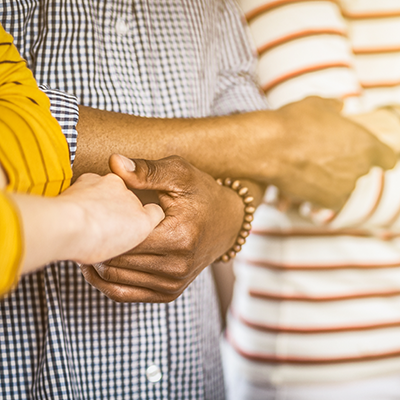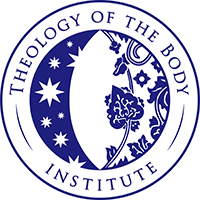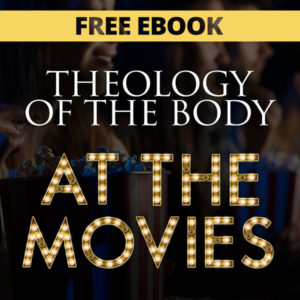

Unity-in-Difference as Challenge and Transformation
Unity-in-Difference as Challenge and Transformation


In our “cancel culture” we experience the consequences of difference as negative. Cancel culture is a space in which I can remove not only things with which I disagree, but the people behind those things. It is not discernment, but fundamental rejection of another.
Despite the ubiquitous diversity training in our schools and places of business, often the only kind of diversity that is acceptable is “diverse like me.” Entire matrices are constructed to cull and trim our technological experiences to a kind of alikeness disguised as unity: commercials for the food “we” like, parishes we choose for the folks like “us,” neighborhoods, schools, clothing brands and fundraisers tell us that by being part, we are united. Until we’re not. Until we are un-friended or cancelled, because we are “too different.”
This is not unity. Unity is served by difference – it requires difference – or it is homogeneity. There is a place for homogeneity of course, outside of the gallon of milk I bring home for cereal. But we cannot mistake it for the beauty of unity in difference; an underlying theme of John Paul II’s theological anthropology.
We see John Paul II express this in several ways, including the following two. The first is the language of the body – a language signified by (but not limited to) marriage, a sign of God’s own mystery in the mystery of unity-in-difference. The second is in the hospitality of self-gift of human persons for “another I” in reciprocal recognition of their samenesses that also honors their differences.
In the case of marriage, spoken vows affirm that original unity in which the man ecstatically recognized the woman, and she clung to him. In this way, the couple affirms the prophetism of the body – the language of female and male bodies as a sign of preverbal expression that enables the activity of unity. For John Paul II, the marital bond between male and female is a model for relationships more generally and promotes self-discovery through difference.
The theological reality of this self-discovery manifests itself in the “ever-new surpassing of the limit of man’s solitude… [which] always implies that in a certain way one takes upon oneself the solitude of the body of the second ‘I’ as one’s own.” John Paul II helps us imagine the unity-in-difference of the two as each takes on the “body of the second ‘I’ as one’s own.” In this way, the body enables union in the surpassing of the self – the reception of another person in a kind of investiture of their singularity.
This metaphor reveals marital union as a sign embedded in our humanity toward unity-in-difference. But as a metaphor, it can be extended. Suppose in every interaction – perhaps starting with parish and family – we imagine taking on the body of the second I as my own. How might that change the way I think about the overenthusiastic singer in the pew behind me or the terrible homilist or the family who always comes to church late?
Unity begins with my own regard for the other. For John Paul II self-gift is the crucial component. But for self-gift to transform from a lovely idea to the lived sacrifice of Christ, it needs focus and practice. We might call this practice hospitality. Yet more likely than not, we can find the path toward union, and Eucharistic communion, is littered with stumbling blocks of irritation, rigidity or isolationism. We cannot be content moving to the heart of the Christian life next to (or despite!) my neighbor, instead of with and for her.
A phrase I think particularly helpful here comes from theologian Susan Windley-Daoust. In her writings on the Theology of the Body in terms of pregnancy and birth, Windley-Daoust proposes the notion of a “crucible of otherness” which, while applied directly to sharing one’s own body with another body, has wider implications, such as fundamental relationality, unity-in-difference, complementarity, and hospitality, for starters. If we understand the crucible of otherness in John Paul II terms – that the “other” is in a sense “another I” – it changes our understanding not only of unity, but also of my own participation in God’s own union.
When we understand sin as inherently disruptive, the fount of insecurity and a kind of hiding from God, we might recognize the root of our discomfort with ourselves and others, the potential of objectification, the shame of otherness. But the good news is that God’s own infinite diversity, reflected in a small way in the richness of creation, calls us beyond our fear and chaos towards a Eucharistic communion – where unity is possible because of difference, and where we are formed in His likeness more and more through the crucible of the other in self-gift and relationship.
Christine Falk Dalessio, Ph.D., is a New Jersey native who lives in Ohio with her husband Mike and cats Benny and Frankie, named after the popes. She is a Catholic theologian who has been teaching theology in Dayton at the university level for seven years. Christine has attended TOB Institute courses since 2007 and has served on the prayer team for many courses since 2010.
Image: scyther5/iStockphoto.com



